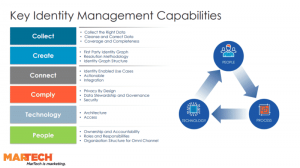 Sometimes the more things change, the more they stay the same
Sometimes the more things change, the more they stay the same
In a recent article, we opened by looking at the similarities between today’s talent and those raised during the 1970s, a period colloquially referred to as the Decade of Change. Four decades ago, as today, society witnessed a massive rollout of new technologies on scales never before seen. That trend has increased by exponential bounds. Parents who once scoffed when an Atari game console became a household appliance, now sport tablets and smartphones and the same online connectivity as Millennials. One of the biggest transformations in the 1970s, however, occurred in the office. Emerging technologies, dramatic changes in demographics, pioneering business philosophies and new behaviors reshaped the nature of work. Similar shifts are taking place today, with even greater levels of variance. Yet for the majority of full-time American employees, who express feelings of dissatisfaction and disengagement at work, the now outdated practices of the 1970s haven’t gone away.
Traditional employment has not kept pace with modern life
“It’s no wonder that the majority of employees around the world don’t like their jobs and there is one key reason for that,” observed Jacob Morgan, a contributing journalist at Forbes. “Work practices, attitudes, values, strategies, technologies, and ways of working are evolving and changing at a rapid pace, whereas organizations remain stagnant when it comes to adapting to these changes.”
To paraphrase Morgan, although we live in 2015, many professionals feel they’re still toiling away “in 1970. This gap is what causes employee disengagement.”
“Many companies still operate as though employees are expendable, assume that managers are powerful leaders who should control all the information and remain stoic, and that there needs to be a bureaucratic ‘pecking order’ to how things get done,” he adds. And he’s right; people don’t quit companies, they quit managers. By citing the unconventional practices being embraced by companies such as Valve, Whirlpool, Netflix and Unilever, he provides a sort of call to action: success comes from committed efforts that cater to scheduling flexibility, work-life balance, skills development, recognition, transparency, honest communication and more.
The interesting thing is that these qualities form the reasons why talent are actively choosing contingent work in favor of permanent roles. And MSPs and their staffing curators have already mastered the evolution from 1970 to 2015 by engaging in five key interactions with their talent: Priorities, Performance, Perspective, Pay and Progress.
Contingent work has never stopped evolving
Internal labor markets and the core worker system dominated U.S. employment relationships until the 1970s. At that time, however, a noticeable shift occurred. Suddenly, contingent labor utilization began to skyrocket, growing at an annual rate of 11 percent from 1979 through the late 1990s — five times faster than in most other sectors. Yet what began more than 40 years ago in response to deep economic recessions has become a preference for millions of professionals today.
Consider these statistics reported by DCR Workforce: “An industry report by the International Freelancers Academy (IFA) found that 38 percent of survey respondents said they made more money as freelancers than as a permanent employee. Additionally, most (46 percent) said they have more free time than they did as in-house workers, and over half (57 percent) said they feel more secure as a freelancer than as a full-time employee. Over 70 percent said they are happier as temp workers, and 79 percent say they feel more productive. And finally, 55 percent said that they would not want to go back to traditional work.”
Another study, this one carried out by Harris Interactive, found that 78 percent of contingent workers called their free agent experience more positive:
- 73 percent described their growth potential as good or excellent.
- 86 percent reported job satisfaction as very good or excellent — 13 percent more than permanent workers.
- 60 percent strongly agreed with the statement “I am paid what I’m worth.” For permanent employees, that figure was only 42 percent.
That’s all wonderful news, however to keep the momentum going, contingent talent must continue to feel supported, valued and recognized for their vital contributions in the blended workforce. This is precisely where elite MSPs and their staffing partners are making the difference. Contractors and freelancers today are experienced, educated and high-producing talent who have attributes that differentiate them from the rest — and staffing professionals can capitalize on those traits to drive satisfaction and performance.
The five Ps of pursuing excellence and evolution
Priorities. At the beginning of the relationship, staffing leaders establish a clear sense of purpose, direction, support and connectivity.
- They instill a detailed understanding of how each worker contributes to the overall value and success of the organization’s mission.
- They present a comprehensive list of cascading priorities and strategies to achieve goals.
- They define each worker’s responsibilities and their own accountability as managers of the process.
- They solicit input from their workers and offer transparent communications about objectives, opportunities and challenges.
Performance. As we’ve learned from countless studies on the new generation of talent, they want and appreciate honest feedback. Unfortunately, the mounting responsibilities and time constraints placed on managers can limit employees’ access to this information. MSPs and staffing professionals have the time and commitment to offer ongoing, constructive communication.
- They hold regular performance meetings to recognize their workers’ achievements, course correct identified weaknesses, gain new insights for optimizing their talents, and more.
- They coach their talent and help them develop their skills.
- They remain close to their workers, make opportunities to keep them engaged and informed, and provide training when necessary.
Perspective. This interaction is more reflective, such as an annual review or end-of-assignment evaluation. Many traditional employees say they often feel surprised by the results of their typical assessments. And if that’s the case, industry experts state, those managers have failed their workers. Because MSPs and their staffing partners can devote themselves to nurturing their talent, workers already have an idea of what to expect in terms of missing, achieving or surpassing the goals set for them.
Reviews conducted jointly by MSPs and their staffing partners can be especially effective because they take into account the perspectives of multiple stakeholders across the program who have interacted with the worker. This enhances the feedback that talent want by providing a broader, more robust and more comprehensive depiction of their performance.
Pay. Regardless of incentives, opportunities and amazing company cultures, talent want to be compensated equitably. Through MSPs, staffing partners have access to a wide variety of tools and data that can help them expertly assess the skills and capabilities of their talent — performance metrics, attendance, work output, satisfaction and quality. Using this information, MSPs and their staffing partners are better equipped to negotiate competitive compensation structures for talent with demonstrated abilities and results. Rewarding top performers ensures continued loyalty and performance.
Consider this: by the close of 2014, hourly wage growth slackened to its slowest pace since 2012. However, 77 percent of contingent talent surveyed by the Freelancers Union reported incomes the same or higher than the amounts they made as permanent employees. The presence of an MSP and staffing advocate greatly increases the chances of better pay because they have influence and the ears of hiring managers who want the best talent — not necessarily the lowest rate.
Progress. The last crucial interaction involves helping employees evolve as professionals — gaining additional experience, knowledge, skills and behaviors. Dejected full-time employees lament that “career development” is a phrase they hear during their job interviews and never after. For others, these “development” plans come in response to corrective action. Exemplary staffing professionals are always focused on the evolution of their talent. That may sound strange, given that contingent workers perform on fixed assignments; yet as employees of staffing curators, they have the opportunity to transition into increasingly lucrative and challenging roles as their experience and abilities mature.
- Staffing curators outline and execute dynamic development plans for their professionals, for near and long term goals.
- Unlike busy HR officers and hiring managers, MSPs and their staffing partners can allocate time and resources to invest in their teams.
- MSPs and staffing curators, because of their integrated approach to talent management, can draw on a larger set of available resources and tools that concentrate on providing talent with new learning opportunities.
- As opposed to an organization’s internal stakeholders, teams in an MSP program have one big objective to throw all their efforts and attention behind: taking care of top talent to maximize the quality and performance of the client’s organization.
Living and working in the 21st century
The most successful and enduring organizations are ultimately those in which a common sense of mission and deep respect for talent take center stage. Yet even with the best intentions, too many organizations have fought to retain tradition at the expense of adaptation. In its 2014 assessment of business trends, Forbes called out the issue directly: “Some companies are indulging in new processes for creative innovation, birthing some big ideas that could open new markets. Many CEOs openly extol innovation… Yet, very few really embrace it, acting on the most relevant ideas to truly advance their company. Change is nerve-wracking, but promising new ideas, tested in advance, can work wonders for almost any business.”
MSPs and staffing professionals have been riding the wave of workforce evolution since the 1970s, and they have evolved alongside it. They understand the mindset of 21st century talent, as well as the modern needs of hiring managers. They possess the tools, the acumen, the experience and the skills to fit top talent to highly engaging assignments, carefully selecting the right people for the best clients and positions. By serving as advocates, mentors, facilitators and negotiators, MSPs and their staffing partners overcome hiring challenges with professionals who honor their commitments and deliver exceptional results.
As complementary workers infuse the standard workforce in growing numbers, companies will face even more threats to their sense of familiarity. To truly advance into this new era, it’s high time to call in the experts who helped create it.
(145)





